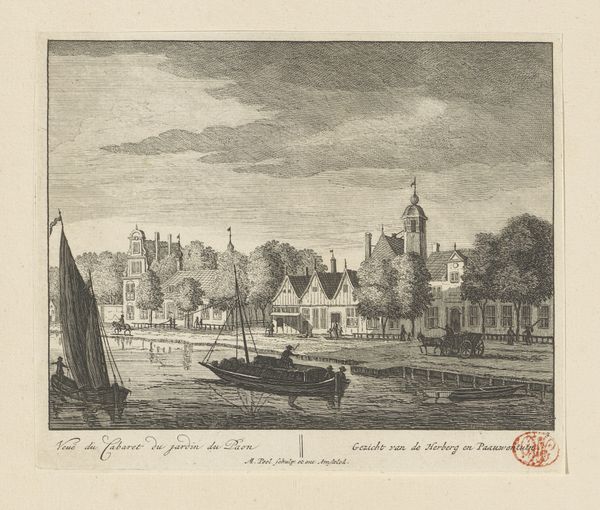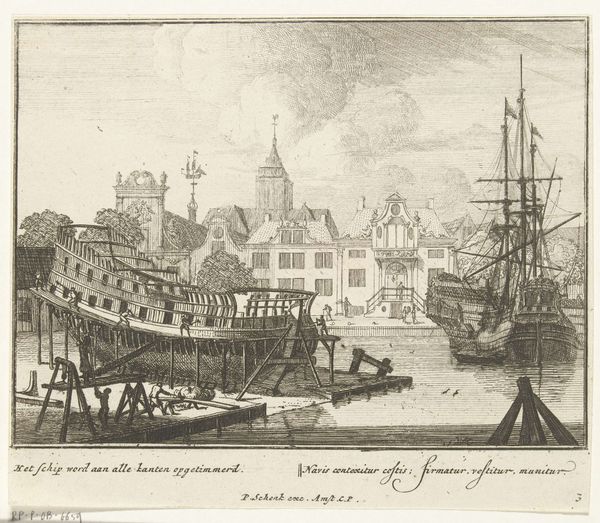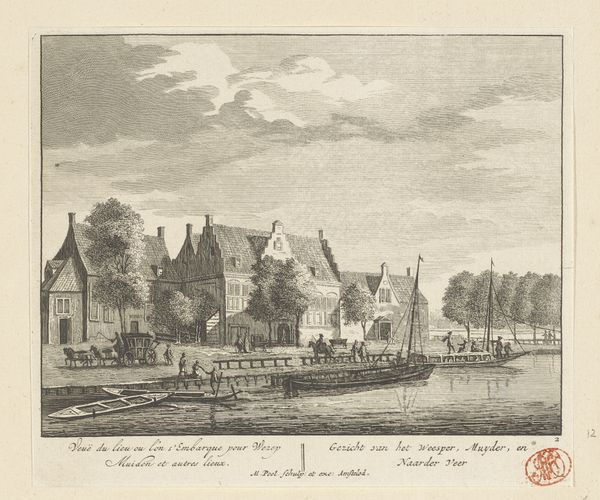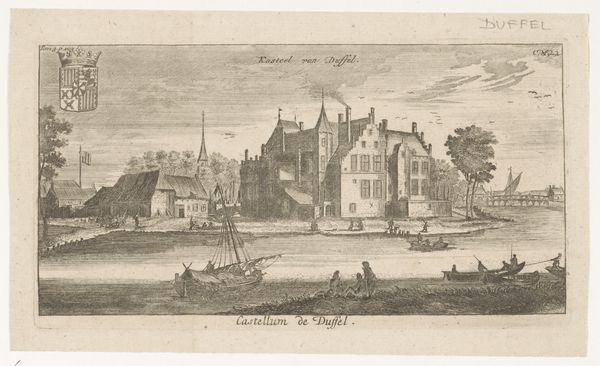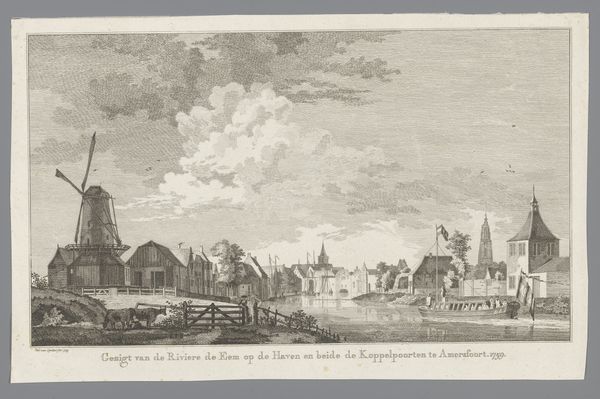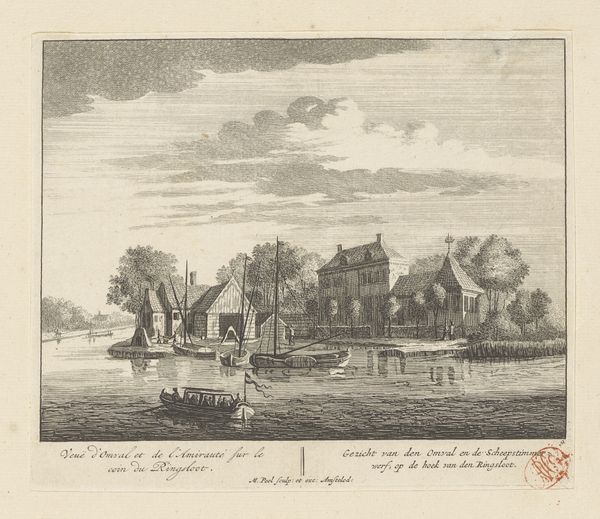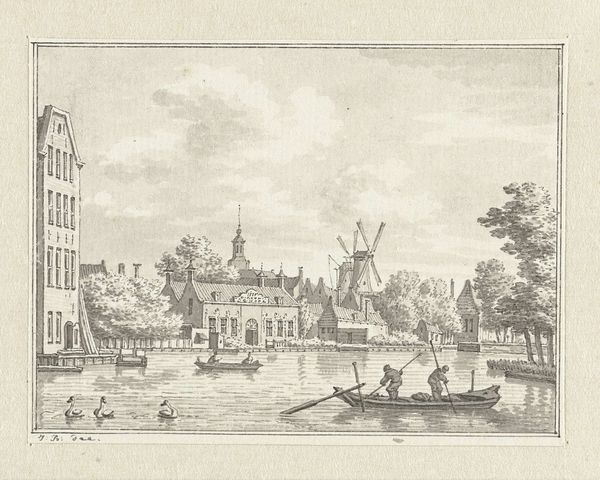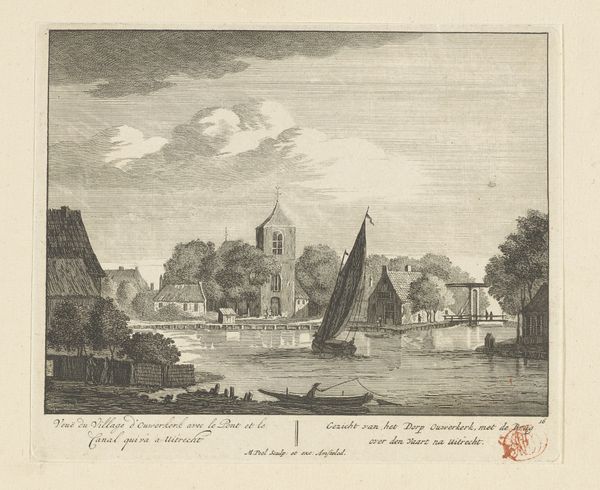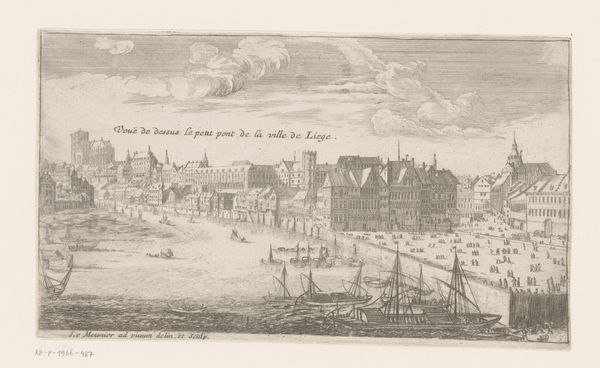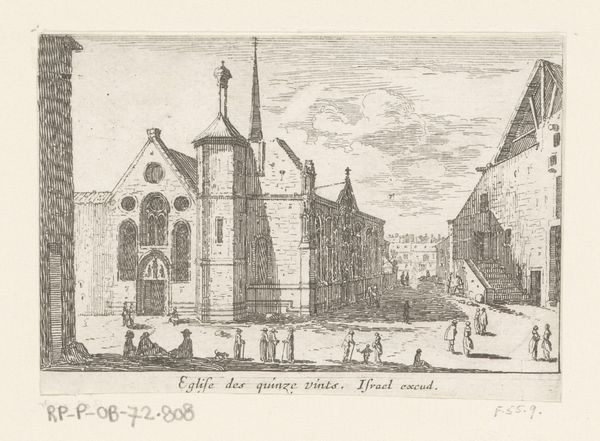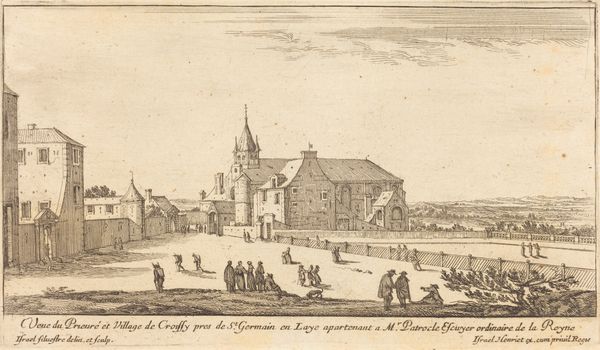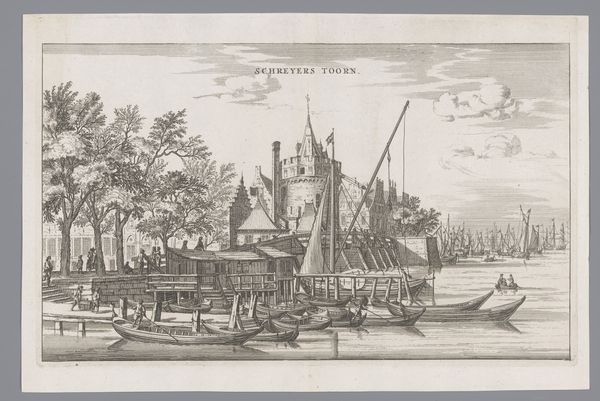
Gezicht op de achterzijde van de katoendrukkerij Buytedruk aan de Amstelveenseweg c. 1730
0:00
0:00
abrahamrademaker
Rijksmuseum
#
comic strip sketch
#
aged paper
#
page thumbnail
#
parchment
#
old engraving style
#
traditional media
#
personal sketchbook
#
pen-ink sketch
#
pen work
#
storyboard and sketchbook work
Dimensions: height 132 mm, width 181 mm
Copyright: Rijks Museum: Open Domain
Curator: We’re looking at "View of the rear of the Buytedruk cotton printing works on the Amstelveenseweg,” an engraving by Abraham Rademaker, dating back to around 1730. Editor: It has this dreamlike quality, all these careful, delicate lines. It's almost calming. Like looking at a memory, maybe one of an industrialized area. Curator: Notice the composition—Rademaker’s use of line emphasizes depth and structure, moving your eye from the boats to the cotton printing building, complete with its central tower or "Torentje," as mentioned in the Dutch title. Consider the weight given to the architectural features of the industrial building. Editor: Right, and situating that cotton printing works in Amsterdam is no small thing. Consider the brutal labor practices associated with early cotton manufacturing, especially in relation to global colonial exploitation. Curator: And there’s a sense of activity and daily life—look at the details in the water with people going to and fro via different ships and boats. What do these compositional techniques mean here, and how do they lead the viewer through this print? Editor: The seeming quietude of the scene belies that history, doesn’t it? The architecture is, itself, evidence of the way globalized violence manifests even in the visual landscape of 18th-century Amsterdam. Curator: Perhaps, or perhaps Rademaker simply sought to depict a commercial area, creating something closer to a topographical image. Editor: Well, sure, but those seemingly quaint images naturalize something far more insidious. By presenting that specific industrial landscape without critical examination, the illustration misses engaging questions of ownership, worker exploitation, and global commerce. Curator: Interesting how viewing form so closely opens possibilities in considering content and social critique! Editor: Yes, considering whose voices are amplified or erased allows viewers a closer approach to histories and cultural movements represented in works such as these.
Comments
No comments
Be the first to comment and join the conversation on the ultimate creative platform.
